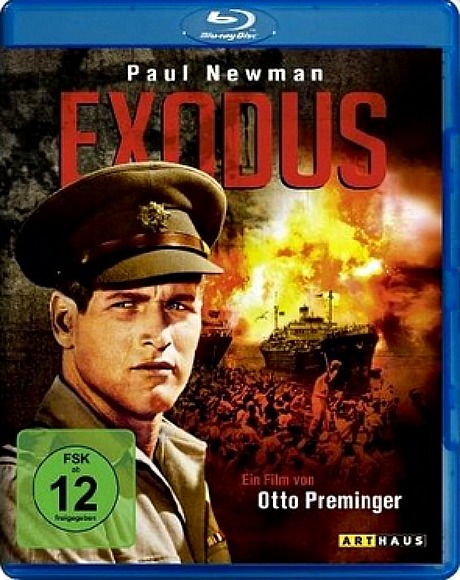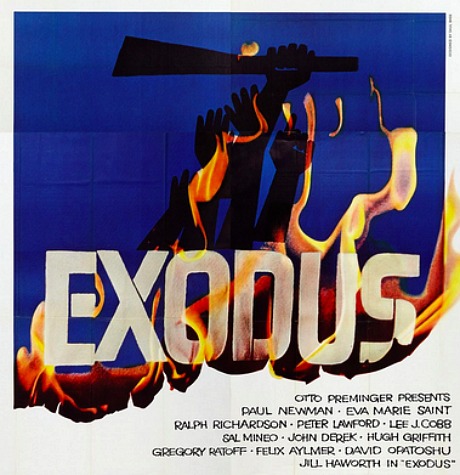Speaking of Exodus, I shelled out last night for a 2012 German Bluray of Otto Preminger’s 1960 same-titled epic. Not out of any particular affection for this glacially-paced, historically fictionalized account of the struggle to establish the state of Israel in May 1948. I bought the damn thing simply because Exodus was shot in Panavision 70 (the same large-format process that Lawrence of Arbaia was captured with, although under the freshly-branded name of Super-Panavision 70) and I figured I might see a semblance of the razor-sharp 70mm images that were projected during the reserved-seat engagement at the Warner theatre (B’way and 47th).


Verdict: I’m not sure what elements were used to create the Bluray (35mm or 65mm?) but it doesn’t look half bad. The opening credit sequence has been windowboxed (bad) and there’s a little dirt here and there, but generally it’s fairly impressive. You can see and feel and sense the large-format vibe. This Exodus is apparently much cleaner and richer than that MGM/UA DVD version that came out six or seven years ago and which many complained about.
If only the drama was more compelling. There’s no real fire in the blood of this film, although it contains a few diverting or visually handsome sequences. (The dp was Sam Leavitt.) Exodus mostly just strolls and saunters and glides along in second gear from start to finish, and at a length of 208 minutes. Paul Newman‘s performance as Ari Ben Canaan feels clenched and rigid and somehow “off”; the performances by Eva Marie Saint, Sal Mineo, Lee J, Cobb, Ralph Richardson, Peter Lawford (broad and buffoonish as an anti-Semitic British officer), Jill Haworth and John Derek are reasonably convincing. The length resulted from the importance that Preminger saw in the statehood struggle; the 626 pages in the Leon Uris novel also had something to do with it, I’m sure.
Mort Sahl allegedly said at one of the premieres: “Otto, let my people go!” Probably bullshit but a good line.
The only things I’ve ever truly admired about Exodus are the Saul Bass title art and the Ernest Gold score.

